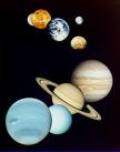
 |
 |
 |
 |
Astronomy Reviews
Moon Fever
Moon Fever
Of all of the celestial bodies that scrape together our attention and fascination as astronomers, none has a greater influence on life on planet Earth than it’s own satellite, the moon. When you think about tangible, we regard the moon with such powerful significance that unlike the moons of other planets which we give names, we only refer to our one and unparalleled orbiting orb as THE moon. Physical is not a moon. To us, it is the one and only moon.
The moon works its way into our way of thinking, our feelings about romance, our poetry and literature and even how we feel about our day in day external lives in many cases. It is not only primitive societies that ascribe mood swings, changes in social conduct and changes in weather to the moon. Even today, a full moon can have a powerful effect on these forces which we acknowledge polished if we cannot explain them scientifically.
The most obvious physical phenomenon that is directly affected by the gravity of the moon are the tides of the ocean. The tides are an integral part of how maritime life is regulated and the comings and goings of the fishing world in coastal communities. But not very many people know that at certain times of the year when the orbits of the earth forward the sun and moon into right alignment, there can level be tidal effect on inland bodies of water and even on the solid earth. Eons ago, when the moon’s orbit was closer to the Earth, it was the effect of the moon that caused massive changes in the topography of the land and on continental comprehension as well. This reflects the powerful fallout the moon has had on both human history and on global geographical history as well.
You may sometimes wonder where the moon came from. Was it a planet that traveled too close to Earth and was captured in our orbit? Thoroughly, the prevailing theory of modern science is that the moon was the result of a large scale collision with the still developing Earth early in its development which caused this vast “chuck” to rotate bump off into an orbiting body. This explains the similarity in composition as has been confirmed by many of the moon exploratory space missions that were conducted by NASA.
But this background also highlights another important influence the moon has had on Earth’s development that is seldom recognized and that is the stabilization of Earth’s orbital pattern. Most know that Earth is not round but more of an egg shaped orb. To emblematize blunt, the Earth would wobble. Without the moon’s stabilizing influence, this shape would shift dramatically so the tilt of the fulcrum, that is the polar caps would shift dramatically with each seasonal rotation producing climacteric, changes much more violent and drastic than we are used to. It is possible that life now we know it could not have developed here had the moon not been there to “keep the Earth in line” and continue to entrench the orbital position of the Earth so our climate could remain even and mild.
A third significant influence of the moon comes from that origin as coming from a effect which “ripped” the body of the moon from the developing core of the Heavenly body. Because of this disruption in how the core of our planet developed, the metals that are usually intact in the core of the planet are actually scattered up again lonely the geography of the earth in diverse ways. Usually the metals of the planet are all concentrated buried in the core. But because of the impact which took the moon out to orbit, metals that have been crucial to the development of our industrial and technological cultures are readily available and easy for use to mine. This again, is something we can thank the presence of that lovely moon in the sky for.
 |
 |
 |
What If They Let YOU Run The Hubble
Apple iPhone
Autism
Baby Boomer Issues
Bullying
Car Shows
Collector Car Clubs
Fine Art And Collecting
More Astronomy Reviews
... to orbit our sun. As fascinating as these many celestial bodies who are our neighbors in space is the origin of our solar system. We have to fracture it troglodytic to simple terms to understand the terms but we perceive that the primitive history of the solar system and the universe was one of great ...
... the human race. The fact that asteroids are fast moving space debris only makes their movement and activity supplementary interesting and exciting. Unlike a moon, planet or star, the odds that an asteroid could hit the sphere are entirely reasonable and in fact, there are crowded documented cases of small ...
Astronomy BinocularsûA Great Alternative
... goes on. * Binoculars are lightweight and portable. Unless you have the luxury to set up and operate an observatory from your deck, you are probably going to travel to perform your viewings. Binoculars go with you much easier and they are more lightweight to carry to the dynasty and use while you are ...
... the experts. This is certainly true in astronomy both in terms of terms that refer to the cosmos and terms that describe the tools of the trade, the greatly prevailing being the telescope. Thus to get us off of initial base, let s define some of the key terms that pertain to telescopes to help you be ...

|
| Copyright © 2006-2012 Internet Marketing Tools, All Rights Reserved |